
“A sensibility is almost, but not quite, ineffable. Any sensibility which can be crammed into the mould of a system, or handled with the rough tools of proof, is no longer a sensibility at all. It has hardened into an idea…” – Susan Sontag, Notes on 'Camp' (1964).
I’m a big fan of ineffable sensibilities as a framework for research. After wrapping up my deep dive into the “iconic” as a self-sustained genre in art, fashion and culture – which culminated in the first issue of Bagmag (“a teen magazine for adult readers,” as I like to call it) – I started thinking: what makes things truly memorable?
My top contender was cringe. The sublime followed soon after. Being alive is sublime, and nothing makes you feel more alive than experiencing cringe. Does that make cringe equal to the sublime?
Cringe is a kind of enigmatic superpower. It’s uncomfortable, sure – but not inherently bad. In some cases, it even brushes up against the sublime. As with many so-called opposites (see the horseshoe theory), sometimes the only real difference between them is timing.
I decided to trace how cringe fuels cultural production and where, along the way, it might tip into the sublime. Before looking at specific examples (if specificity is even possible here), and taking a cue from Susan Sontag’s advice on describing sensibilities in words, here’s an incomplete set of notes outlining the codependent relationship between cringe and the sublime:
- Cringe has been classified left, right and centre. For the sake of argument, I’d boil it down to this: a strong emotional response to the recognition of a failed attempt. Nothing sublime about that, is there? And yet, cringe is omnipresent. It moves in different directions, carries different shades (ContraPoints and Maybe Baby references here).
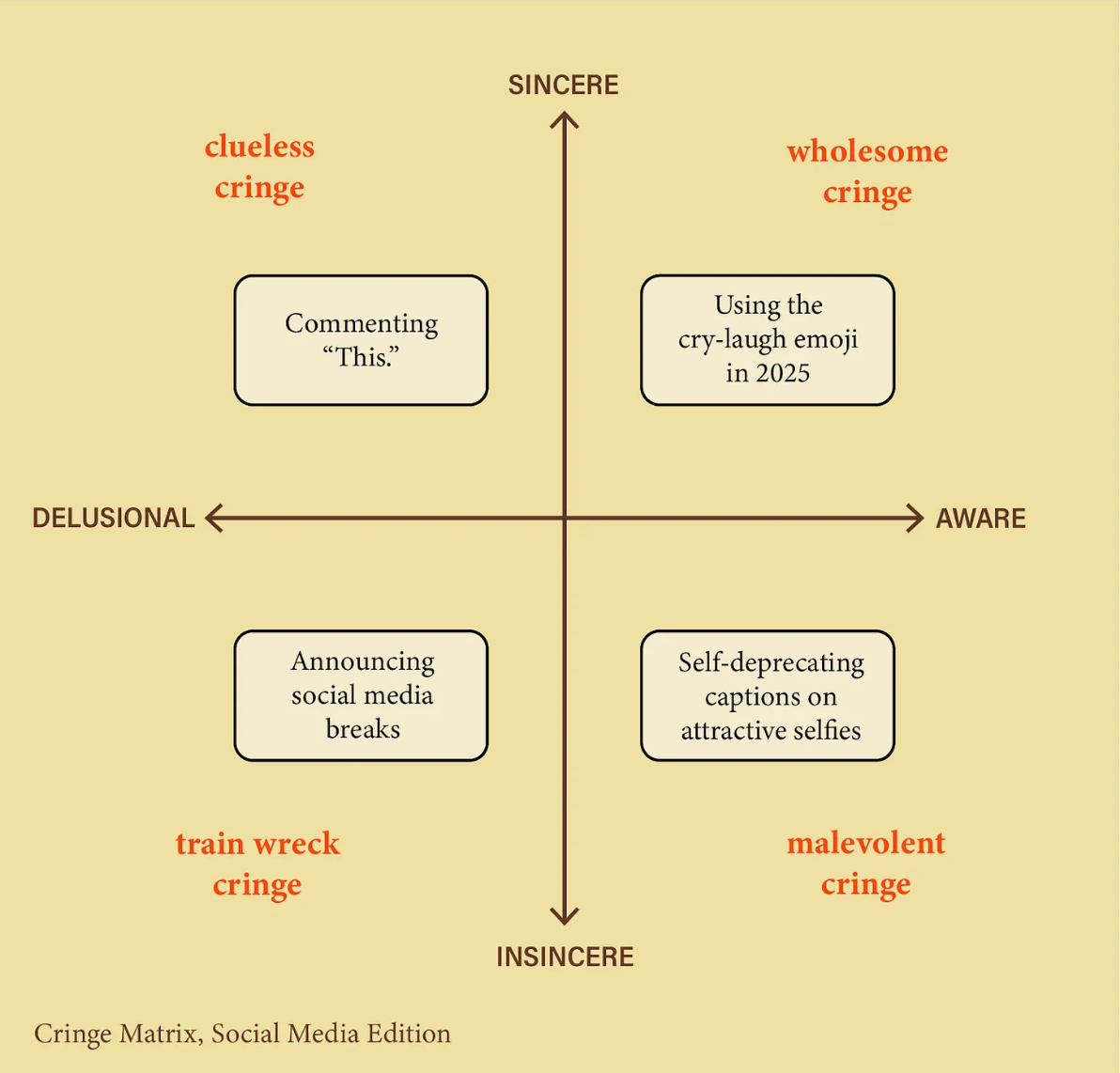
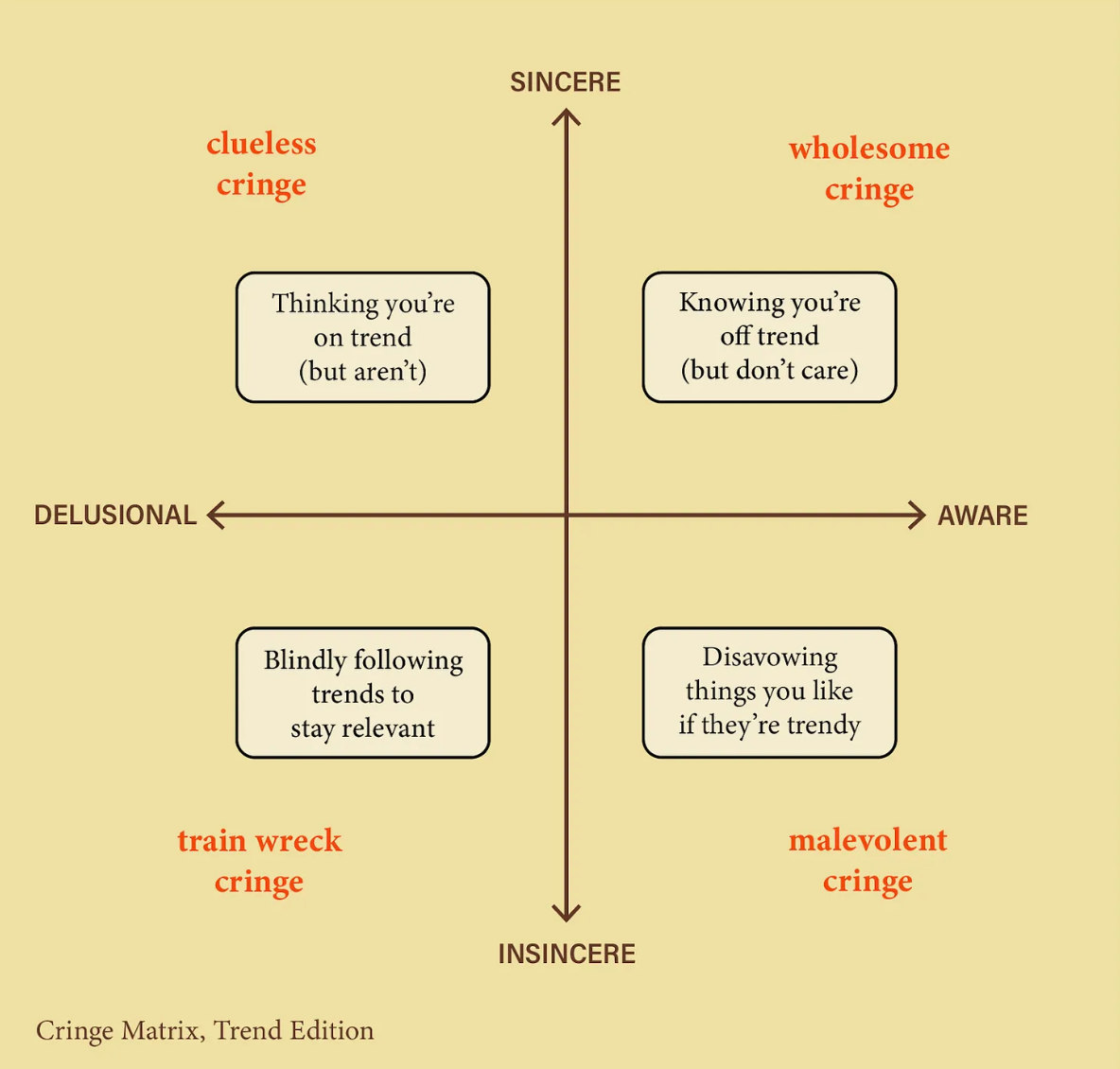
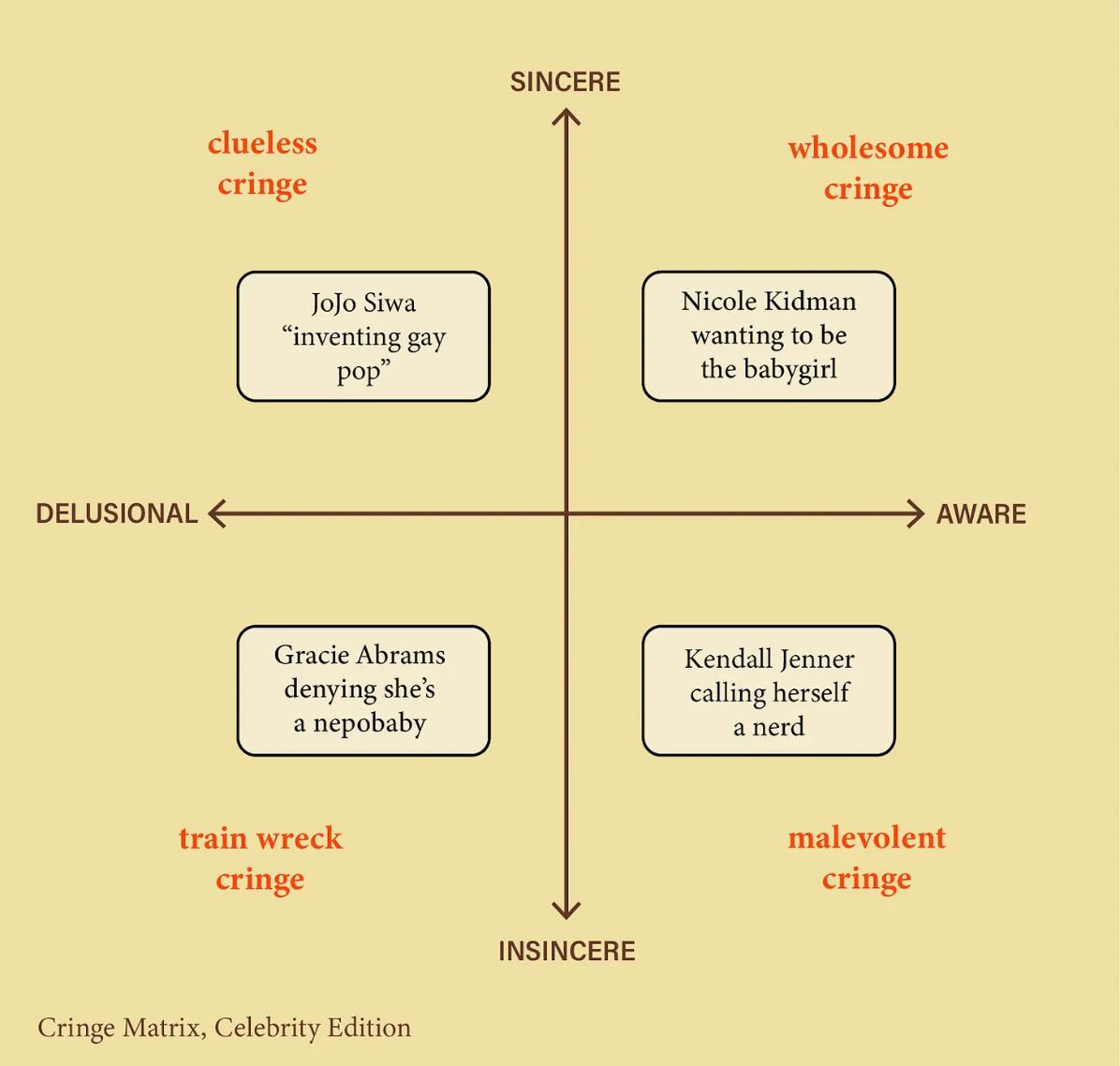
- Cringe is pronounced, actionable and abundant.
- Ever since the sublime first entered fashion with the romantics, cringe was there too. Just imagine: tortured poets “channeling” the sublime – cringe!
- The sublime, like cringe, is hard to articulate – but easy to feel. And like umami (shoutout Nemesis Umami), you notice it most when it’s missing.
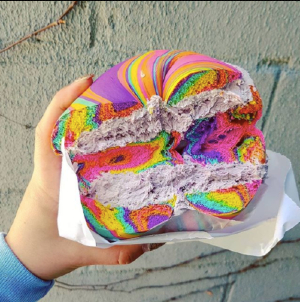
- The sublime – hard to source, rare and elusive – seems to attract cringe like bees to honey.
- Most of the time, the cringe arrives a little too late, right when the sublime is gone. Cringe, however, can poke tiny holes in the mundane – sending shivers down your spine. A piercing sensation, a shattering of comfort. And in that brief moment of heightened awareness, the sublime might just slip through.
- If the sublime is the drug, cringe is the addiction. In the endless search for the sublime, we’re bound to encounter plenty of cringe along the way. And the accelerating force in all this? Fashion.
- Because of its reinventive, repetitive nature, fashion exists in a state of perpetual trying. To take part in it is to embrace the cringe of failure as much as the pursuit of the sublime.
- Fashion reaches the sublime in two scenarios: by accident, or through nostalgic longing for the past – which paradoxically contradicts the sublime’s essence as an ultimate presence in the now.
- Fashion is making the sublime cringe for a period of time.
- Fashion’s Achilles’ heel is precision. To be fashionable is to be defined – anything else is neither here nor there. In its pursuit of the sublime, fashion turns to hyper-focus, trying to pin down the ineffable. But in doing so, it collapses the sublime into cringe. Once again, fashion puts a stick in its own wheels.
- “When something is just bad (rather than Camp), it's often because it is too mediocre in its ambition” - Susan Sontag, 'Notes on Camp'. Hard agree! Some things, ideas and activities will never create a strong emotional response and are on the bottom of the horseshoe theory. I call them the dUll ones: uniforms and utility, ugliness, user-friendliness... I guess U-words are horseshoe-shaped for a reason…
- Cringe is the reaction, sublime is the state.
- As Sarah Perry writes on Ribbonfarm in the context of cringe and sacred experiences: “It is widely accepted that weird and outlandish beliefs function better as tribal signifiers than plausible beliefs, because weird beliefs function as a stronger signal of loyalty to the group.” Cringe, when it calcifies into a state of being, reinforces the binary—and rarely leads to the sublime.
- Often, activities acknowledged as the paths to the sublime are deemed cringe by non-practitioners. Cringe is the barrier of entry.
- To be continued…
After mapping out some of these dynamics, I began seeking out the places and activities with the highest cringe count – just to see what might happen next, and whether the sublime might, in fact, sparkle in the dark.
The exchange rate on these experiences is volatile. I’d estimate it takes about five to 10 cringes to yield a single sublime.
To document this ever-expanding Cringe=Sublime scouting session, I record interviews with writers, artists, academics, curators and stylists. It became a Bag Talk podcast. Here are some of the findings so far:
Gorecore and Artworld
Doron Beuns, artist and curator, reflected on his own practice – and the art world at large. In a note we exchanged while preparing for our conversation, he wrote:
“I think that to be shameless sets you free. There is so much fear of doing the wrong thing, especially in the art world, whilst actually nothing is at stake. It is profoundly unimpactful and undangerous. We should embrace that. It should be fun! Don’t be a cuck”.
We agreed that gore, as a tactile aesthetic, provokes a deep, physical cringe response – making it a surprisingly fertile ground for the sublime.
Impersonation
Performance artist and writer Levi van Gelder agreed to give a rare interview outside of his infamous alter ego, Ötza. Ötza is a centuries-old corpse who’s a fan of the L-world and lactose-intolerant. Van Gelder writes fanfiction from Ötza’s perspective, immersing himself in cringe-worthy experiences through her character while searching for moments of the sublime. I’d rate it 10/10. Impersonation is inherently cringe for everyone involved, yet in its most transcendent form – sublime!
Nature
Zazie Stevens, editor of Daisyworld Cal, says that the cringiest thing about nature is anthropomorphism. Nature mainly turns cringe in corporate eco-speak and human-centric ad slogans. To be fair, though, this isn’t nature's fault. Nature is 10/10 sublime – only minor cringe sneaks in through human-made behaviours.
I’ll sign off here by adding that Cringe = Sublime is just a perspective, but sometimes your vantage point is the most important thing to consider.
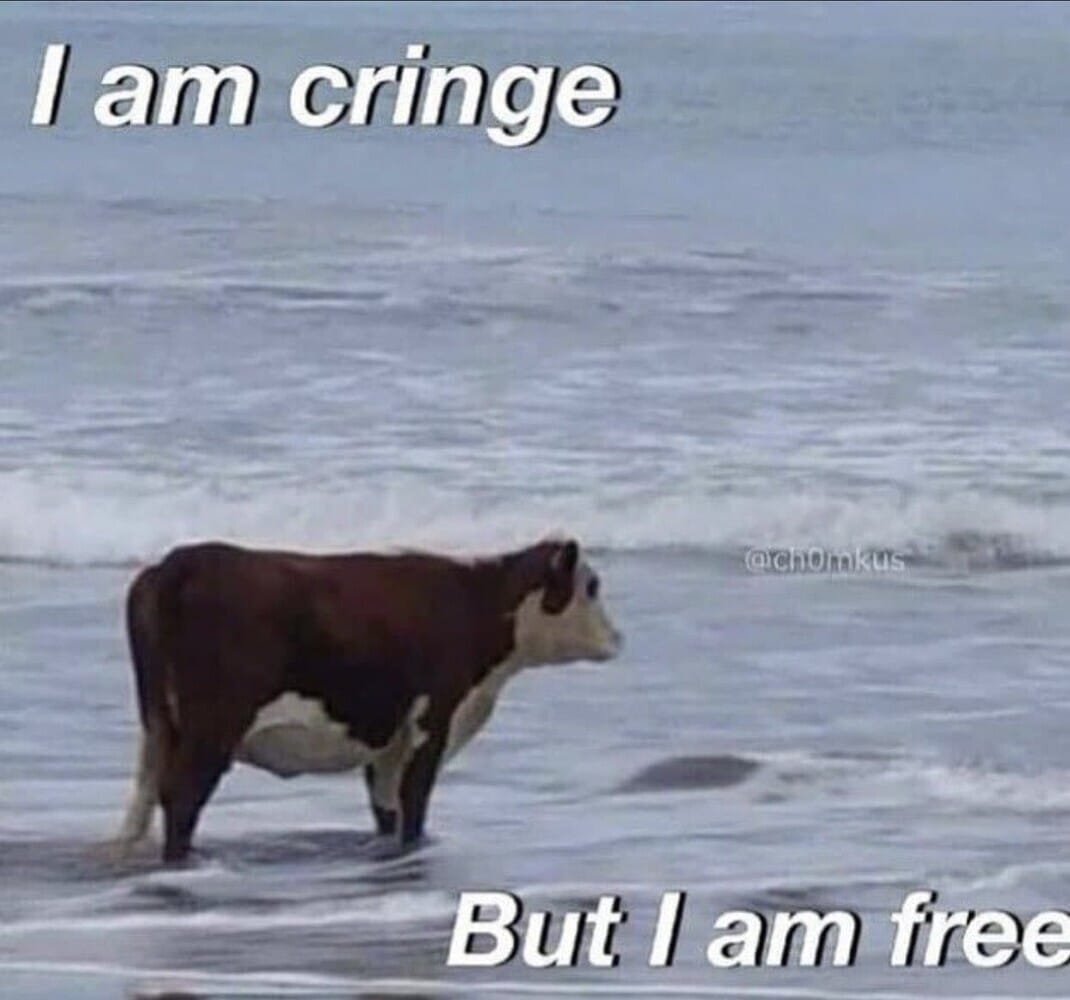
| SEED | #8310 |
|---|---|
| DATE | 15.04.25 |
| PLANTED BY | ELIZAVETA FEDERMESSER |
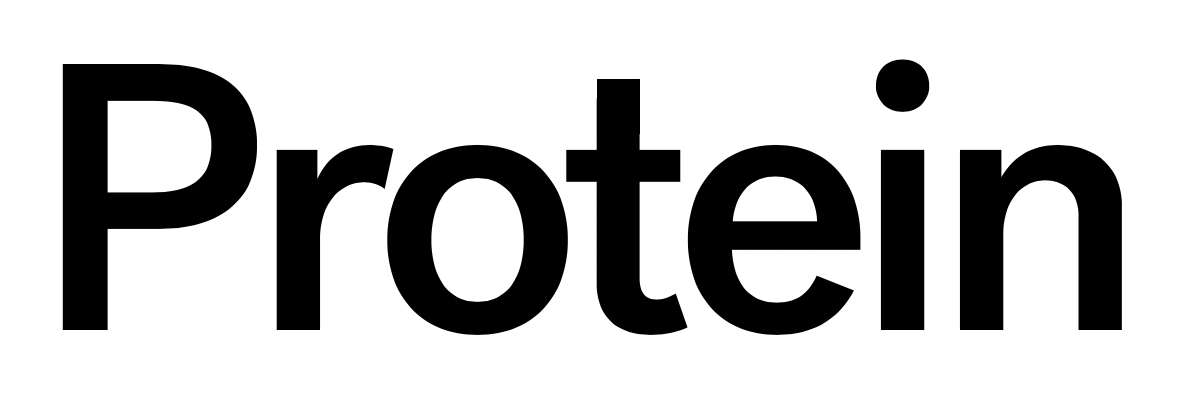


Discussion